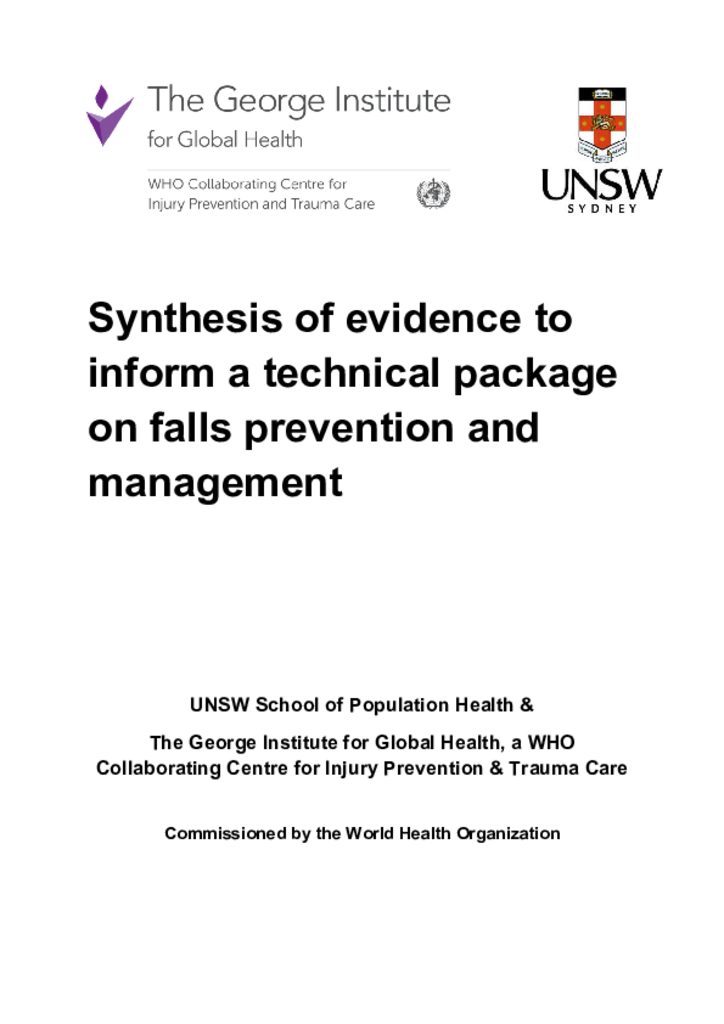
Preventing and managing falls across the life course
Falls are a growing and under-recognised public health issue. Every year more than 684,000 people die as a result of a fall, and 172 million more are left with short- or long-term disability. The vast majority of these deaths occur in low- and middle-income countries.
In June 2016, the World Health Organization (WHO) Expert Consultation on Falls Prevention and Management met in Geneva where it agreed to the need for an evidence-informed guide on the prevention and management of falls, which is suitable for practitioners, program managers and decision-makers whose portfolios may affect falls outcomes.
In response, the WHO commissioned researchers from the WHO Collaborating Centre for Injury Prevention and Trauma Care at The George Institute for Global Health and UNSW School of Population Health to conduct a review of high-quality global evidence on falls prevention. The resulting Evidence Synthesis report describes the rapid evidence review process undertaken to identify and quality appraise relevant studies, and assess the level of evidence to support various falls prevention strategies for five key population groups:
Children and adolescents
People in occupational settings
Community dwelling older adults
Older people living in residential care facilities
Older people receiving care in hospitals
The Evidence Synthesis report, along with a global end-user survey and extensive input from global falls experts, formed the background to the World Health Organization report, Step Safely: strategies for preventing and managing falls across the life-course, to which the researchers were also major contributors. Step Safely was released on 27 April 2021.









